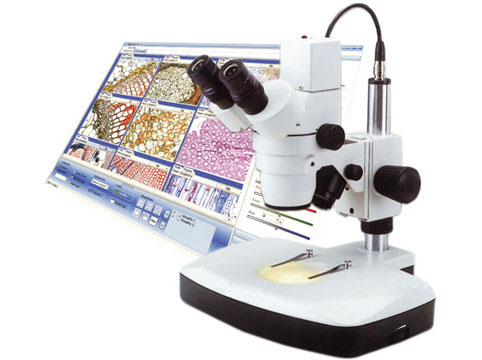Digital microscopes are used for various objects, from micro-fabricated parts to large electronic devices.Digital microscope provides picture speed, convenience, and high-quality images that need to be taken multiple times.digital microscope uses a digital camera that is connected to a computer monitor to display the results in real time.Digital microscopes are easier to operate than traditional optical microscopes.
Advantages of using a Digital Microscope
-Sharper and clearer image of the object. It can be noticed more conveniently and more quickly.
- You can control the size of the object using the camera.
-Improve the focus field using Depth From Defocus.
-Using the camera you can view from several different angles
- Perform measurement calibration automatically.
-Possibility of 3D photography.
-Option to identify the object pattern (Pattern Matching). High resolution image consolidation.

Choosing a Digital Microscope
When choosing a digital microscope pay attention to the quality of the lens and the type of lens. For optimal performance, choose a quality lens. In addition, the lens type is fixed or variable, zoom lenses, lenses with a large focal length, wide lenses and more. And the sensor that helps in good image quality. The resolution of the microscope is determined by the sensor. Another thing to consider when choosing a digital microscope is the stand. Before buying, check if the stand is suitable for our needs, that it does not shake when working, with it is against vibrations and more.
What are Digital microscopes used for?
Digital microscopes are used to magnify and capture images of small objects, such as cells and microorganisms, for scientific research and educational purposes. They typically feature a camera that captures an image of the specimen and displays it on a computer screen or monitor. The images can also be stored and analyzed digitally, which allows for easy sharing and archiving of data. Additionally, digital microscopes may offer features such as measurement tools and the ability to adjust focus and lighting digitally.
Application
Digital microscopes have a wide range of applications in various fields such as biology, medicine, materials science, and semiconductor manufacturing. Some specific examples include:
Medical research: Digital microscopes are used to study the structure and function of cells, tissues, and organs. They can be used to examine samples of blood, skin, and other body fluids for diagnostic purposes.
Biological research: Digital microscopes are used to study the structures and behavior of microorganisms, such as bacteria and viruses. They are also used to study the structures of plants and animals.
Materials science: Digital microscopes are used to study the microstructure of materials, such as metals, ceramics, and polymers. They can be used to examine the surface of materials and identify defects or impurities.
Semiconductor manufacturing: Digital microscopes are used to inspect and analyze the surface of semiconductor wafers and integrated circuits. They are used to identify defects and measure the dimensions of tiny structures on the wafer surface.
Educational purposes: Digital microscope are also used in educational institutions, such as schools and universities to teach students about the structure and function of cells, microorganisms and other specimens.